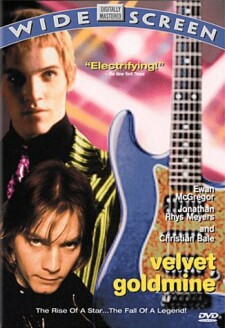Gravity
A slumber did my spirit seal;
I had no human fears:
She seem’d a thing that could not feel
The touch of earthly years.
No motion has she now, no force;
She neither hears nor sees;
Roll’d round in earth’s diurnal course,
With rocks, and stones, and trees.
Wordsworth’s “Lucy” poems take up the “world-body” conceit, familiar to us from some of Donne’s love poems but not originating with him, and apply it to the death of a three-year-old girl. The resonance of this idea with readers of the past two centuries may have something to do — along, that is, with tremendously impressive if computer-generated visual effects — with the remarkable popularity of Alfonso Cuarón’s Gravity, a movie which manages to be well-worth seeing in spite of being in 3-D. There is also a Lucy here, though the daughter of astronaut Ryan Stone (Sandra Bullock) is said to have been six when she died in a freak playground accident. Like Lucy, this dead child, now identified with the Earth itself, comes to symbolize home — the rocks and stones and trees of a particular place, the longing for which by poet and astronaut metonymically and metaphorically repeats their longing for a lost and irrecoverable love.
But where Wordsworth writes of his longing from Lucy-land, whither he is said to have returned from a sojourn “among unknown men,/In lands beyond the sea,” astronaut Stone is apparently stranded in space by a freak accident of her own. A Russian satellite has blown itself up for reasons unspecified and a cloud of space junk traveling in the same orbit but the opposite direction at unimaginable speeds has just cut to ribbons all her space station colleagues, bar space-walking Captain Matt Kowalski (George Clooney), and most of the space station itself. The result is a chilly study in loneliness in which a drama of loss and attempted self-rescue becomes subordinate to images of the last known life in the universe on the verge of being snuffed out by the sheer inhuman immensity of space. At the same time, these images are an externalization of Ryan Stone’s inward drama. As the earth is associated with the dead child, the immense emptiness stands for her grief, from which it is doubtful she will ever come back.
Among the many other visual delights of Gravity, there are clever reiterations of the world-body motif, as when the image of the curvature of the earth, pocked and scarred by rivers and mountains, repeats that of the shattered plexiglass visor of a dead astronaut. Sexual suggestion in the coupling and uncoupling of space-craft may seem to produce fetal imagery of Miss Bullock, in short-shorts and tank top, spinning slowly in the womb-like weightlessness of the spaceship. Both organic and inorganic presences in the movie are magnified to many times actual size by the absence of any earthly context, and the attack on frail humanity by kaleidoscopic geometries of space junk, coming around again and again, almost looks like an assault by geometry itself, or some other inhuman abstraction standing in for the inability of ultimate reality to feel anything for the plight those who may, if they’re lucky, briefly survive its crushing blows.
Again and again, the movie makes similar points, linking Astronaut Stone’s fate to that of an abandoned humanity, as when she tells Astronaut Kowalski that what she likes about space is the silence. She also says that she likes to drive — she was driving when she got the terrible news about her daughter and now feels like doing nothing else after attending to the necessities of earthly survival — and to listen to the radio. She doesn’t care what kind of music is on, just so long as there are no human voices. Subsequently, the whirling space junk takes out all radio contact with the earth save for a faint AM signal consisting of the incomprehensible sounds of an unknown language, together with laughter and a barking dog. Sitting in the Chinese space-craft which is her only remaining hope of returning to Earth and surrounded by unknown technology marked and labeled in an unknown language, Ryan Stone barks along with the dog as a way of re-establishing her lost contact with life through the humblest of claims it is able to make for itself upon the silence of eternity.
In his new book, Darling, Richard Rodriguez asks the question of the “Desert Religions” — that is, Judaism, Christianity and Islam — why God would reveal Himself in emptiness? Or, I suppose, with a nod to the atheists, why would He not? On the significance of the desert — along with the cave and the mountaintop, one of the three loci of religious faith as he understands it — he writes of a friend who tells him that “to walk into the Empty Quarter [of Saudi Arabia] is to journey into inchoate being. One feels dwarfed by emptiness, he says, as, he imagines, an astronaut must feel.” I imagine it’s how Wordsworth felt too, which is why he made Nature’s emptinesses stand in for some kind of ultimate presence. Whether or not Astronaut Stone ever returns to the beloved emptiness which contains the only life there is, you will have to see the movie to find out. But here’s a hint. At one point, Sandra Bullock cries out of her inward emptiness: “No one will mourn for me; no one will pray for my soul.” You don’t have to go into space to feel that way, of course, but Señor Cuarón, who is like Richard Rodriguez of Mexican extraction, is surely right in supposing that sometimes it must help.
Discover more from James Bowman
Subscribe to get the latest posts to your email.







